 The island of Tristan da Cunha is situated in the south Atlantic Ocean, 2 805 km from Cape Town and 3 353 km from Rio de Janeiro.
The island of Tristan da Cunha is situated in the south Atlantic Ocean, 2 805 km from Cape Town and 3 353 km from Rio de Janeiro.One of the stations that DXers used to dream about receiving was ZOE Radio Tristan which operated with just 40 watts on 3290 kHz.
An interview with Radio Tristan's first operator, Alan Hemming, was given to the defunct British Association of DXers in 1972 about the station`s early days. The historical interview has been preserved and is reproduced here with kind permission from Glenn Hauser c/o the DXLD :
" I first went out to Tristan da Cunha in October 1965, as Superintendent of Posts and Telegraphs. On Tristan this fine title covers the work of single handed radio operator and technician and Postmaster in charge of the slim mail deliveries - about five in and five out, per year. The normal postal work does not tax one, but the philatelic work takes a fair amount of time.
Many of these friendly islanders owned transistor radios, shortwave models, and listening was restricted to poor reception, with inadequate aerials, to Springbok Radio and a few other stations in Africa. BBC had, at that time, not started to broadcast from Ascension Island, so reception was not very good.
When the Governor of St. Helena came to the Island in 1966, I approached him to sound out his feelings about an idea which I had for putting a local programme out, with some local colour and rebroadcast of BBC news. The Governor, Sir John Field, who was also the Governor of Tristan, was for it, and so when he left I went ahead with preparations to put on our first programme as part of the 150th Anniversary Celebrations, due in August 1966. We had no materials, and few records, and the equipment to start with was the Oceanspan VII¹s ship's transmitter which we used for our communications.
Our frequency was chosen to suit the band-coverage of most of the receivers, and was, in fact, a shipping frequency. We were not licenced at all, and so we kept the rig on low power. In fact, we were a pirate station in the first instance.
We used an ordinary Philips record player and my own recorder for musical reproduction, and a pre-amplifier was built into the Oceanspan to feed those things in. We started off with just one night per week. To start with the Islanders just did not understand what was meant by a record request programme and, in fact, our first few programmes were cooked-up, requests and all. However the programmes were received enthusiastically and the Tristans were delighted to be getting their first radio entertainment with decent reception.
Having made our start, and found that our efforts were appreciated, I decided that if I could count on support for further evenings from my various co-operators, I should go ahead with plans to get a frequency authorised, and to improve the equipment. By Ham Radio, contact was made with the G.P.O. in London. GB2SM, at the Science Museum in London, co-operated on this, and I was asked to listen on the 90 metre band and ask for a frequency which appeared to be clear. I eventually asked for 3290 kHz and this was granted, with a low power limit, intended for local reception only.
By the time that I returned from leave in U.K. in 1967, plans for improvement had been made and Tristan Radio was officially one of the world's broadcasting stations - maybe the world's smallest in size of building, size of listening public (280 total population) and certainly one of the lowest-powered stations. We bought two Garrard` record decks and a `Ferrograph` recorder, and these were built into a console along with a 6-channel mixer pre-amplifier which I constructed locally. An old navy 62 set transmitter was available locally and out of use, so this was modified to put out with its pair of 807's in the output, approximately 40 watts input. A good antenna was cut for the frequency, and we went on the air with a compact programme set-up in one room of our old wooden shack on the cliff at Tristan. We did three nights a week, Wednesday, Fridays and Sundays from 1900 to 2200 GMT.
The signature tune "Scottish Soldier" was chosen because the early founder settler of the island community was Corporal Glass of Kelso in Scotland. He went to Tristan with the Army Garrison and stayed when they left. After the initial announcement in English we usually had Children`s Hour, conducted by a lady from the Island and, sometimes, supplemented by BBC Transcription Service material. The children`s programme makes way for a re-broadcast of the BBC overseas news at 2000 hrs - normally received well these days on a 9 MHz frequency, or on 15 MHz. We have local request programmes with birthday messages etc, such serial programmes as the Paul Temple series, comedy serials, Ken Dodd, Kenneth Horne etc. Locally produced programmes include some panel games. One currently running had the doctor as Question Master and a team of four people each time the game went on air. When I left in November I had introduced a further one night per week, on Mondays, same hours of broadcasting.
The low power used makes it unlikely that reception will ever be good in Europe as there is competition from other much more powerful stations on or about the frequency. In fact the little transmitter, as I found when I was on relief there in 1971, was not being run at full efficiency. The ATU which goes with the transmitter had been disregarded, and the set was not loaded at all. Reception was even poor on the island. Whilst there I built a small pi-output which brought our reception up to a decent level on Gough Island about 250 miles to the South, which is a very unfavourable direction behind the mountain. Reports of reception reaching the Island have not been confirmable in the main, although one Swedish listener gave enough programme content to make it seem likely that he did hear something. The same applies to the South Africans expedition reports. They could have heard us but the reports are all very indeterminate. In fact, the only one who, whilst I was on the Island, made a likely report was the Swedish listener.
Now the station may be heard more easily. A new transmitter has gone out to the island and it seems that the transmission may be with 1000 watts in the near future. If a good aerial is used there may now be a real chance of hearing Tristan Radio. Even with this greatly increased power it will not be an easy station to receive. "
Dxer Glenn Hauser added :
" I am not sure that the 1000 watt transmitter was ever installed though it was shown for some years in the WRTH under future plans. The station was last listed on 3290 in the 1993 Handbook, since 1994 it has been listed as an FM outlet. South African DXers have told me about their expeditions to the coastline stringing out long aerials to try and receive the station during its limited transmission hours. "



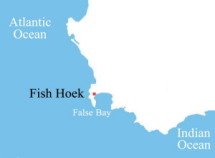

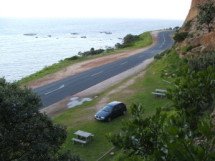


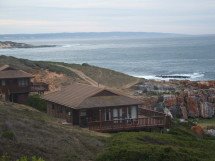

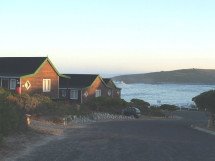


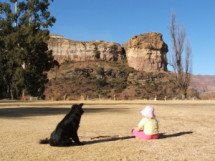








2 comments:
David Mahony I was here in 1961 on HMS Leopard to rescue people and effects from the volcano eruption. Later, around 1966, as a radio Amatuer, I used to communicate with the postmaster and sent him a tea chest full of tea on the MV Tristain as they had no tea on the island. We took two puppies from the island and named the one Tristan and the other Cunha.
Hi David Many thanks for sharing your interesting connection with Tristan da Cunha - much appreciated. Great names for the puppies! 73
Post a Comment